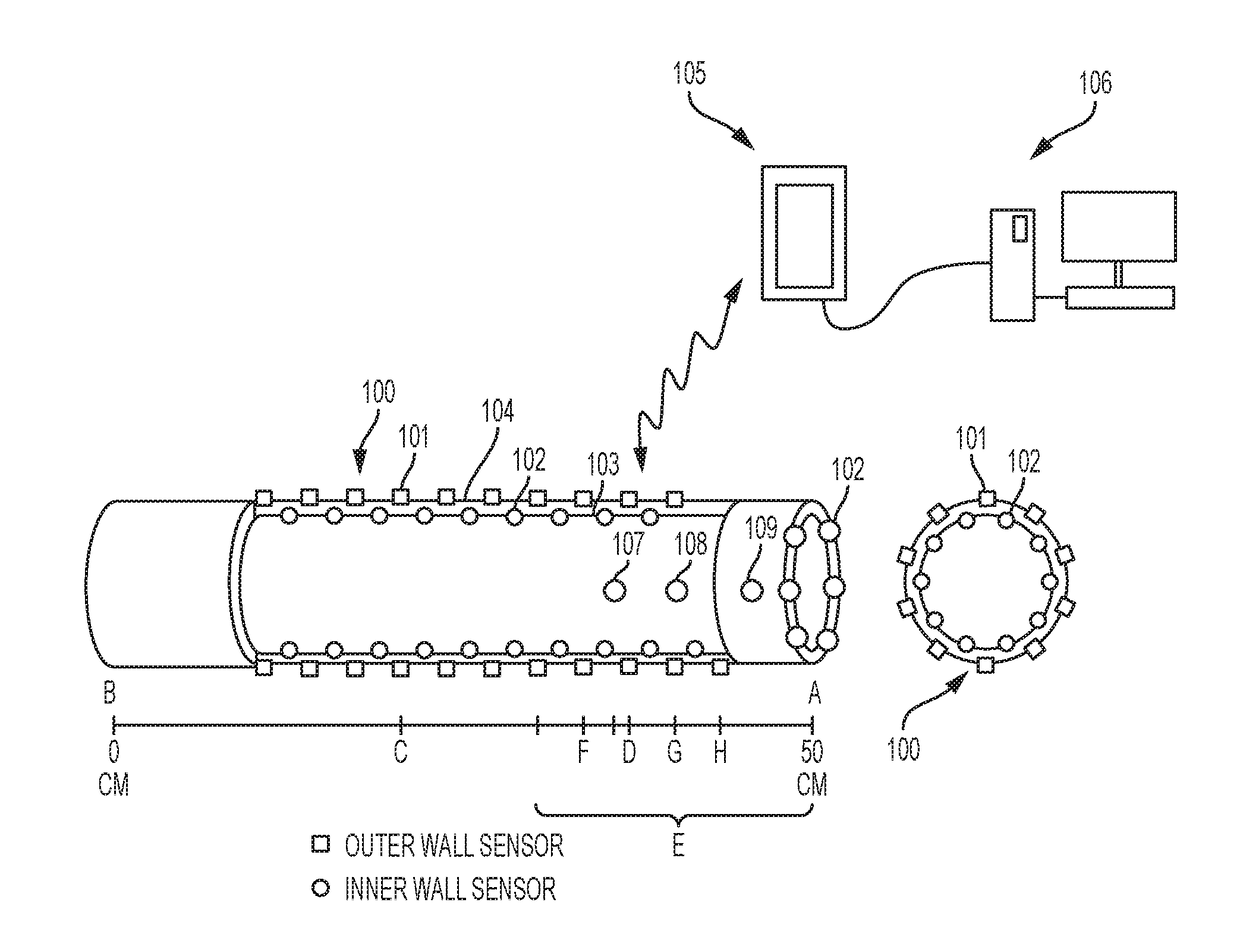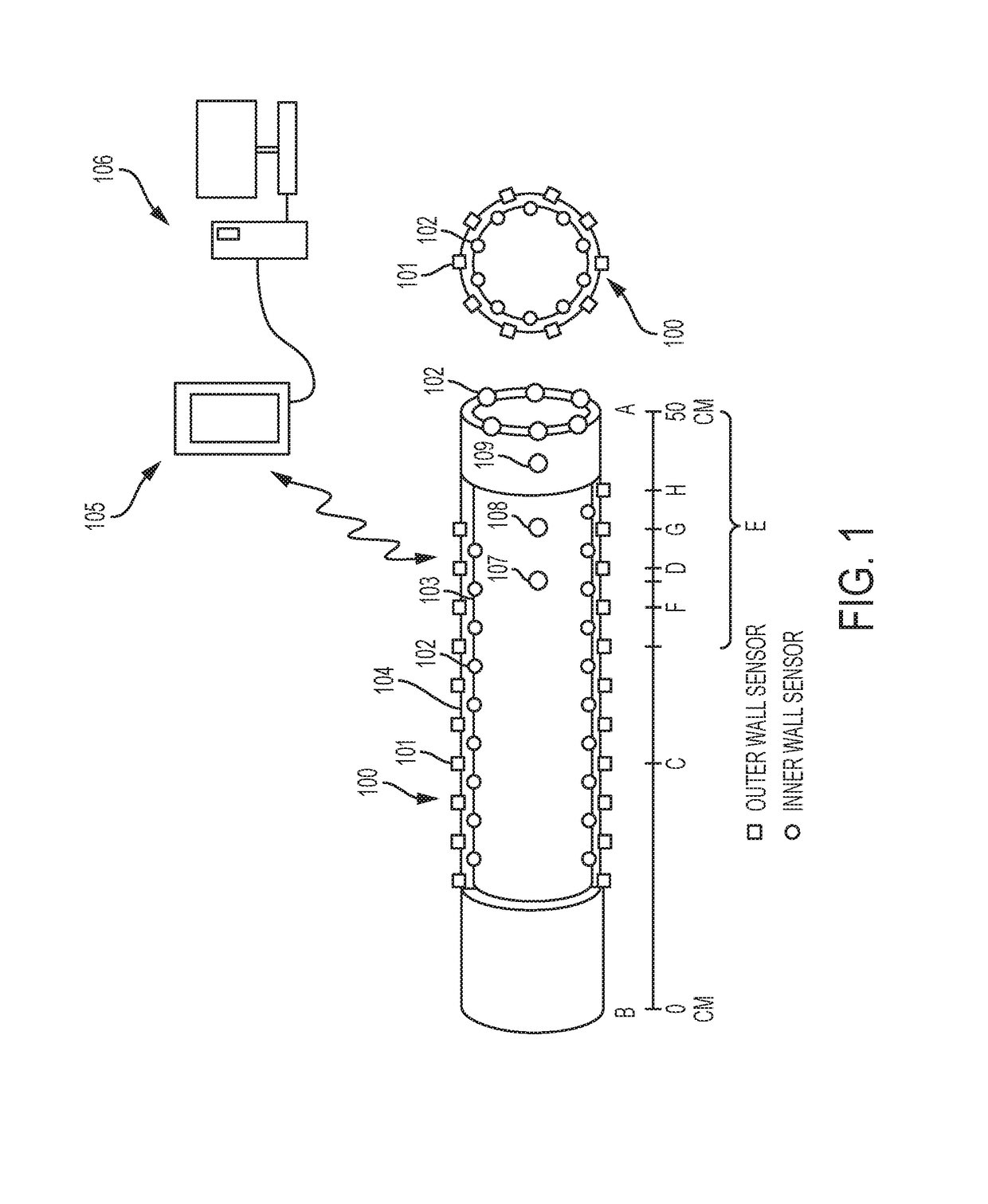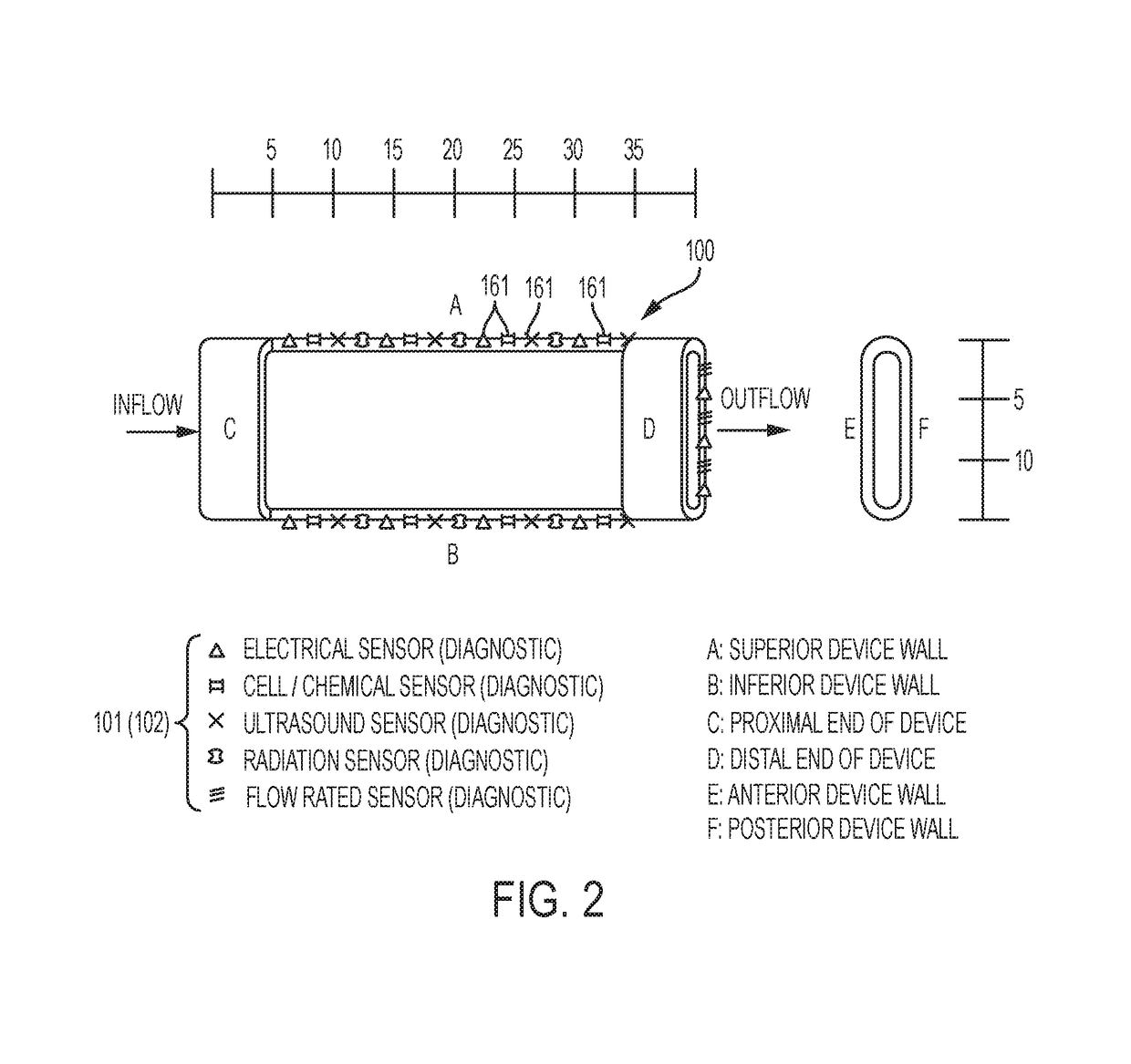Embedded biosensors for anatomic positioning and continuous location tracking and analysis of medical devices
a biosensor and anatomic positioning technology, applied in the field of miniature biosensors and nanotechnology, can solve the problems of affecting clinical outcomes, excessive cost, and fraught diagnostic methods in use, and achieve the effects of reducing (or even eliminating) iatrogenic complications, ensuring the accuracy of the positioning and positioning of the device, and ensuring the accuracy of the positioning and positioning
- Summary
- Abstract
- Description
- Claims
- Application Information
AI Technical Summary
Benefits of technology
Problems solved by technology
Method used
Image
Examples
Embodiment Construction
[0035]The present invention is directed to a miniaturized biosensor and nanotechnology which is embedded in a variety of medical devices which can be used for real-time device location tracking and analysis, for the purpose of optimizing device positioning both at the time of initial placement and throughout its clinical use (i.e., device continuum). The continuously acquired device-specific standardized data is then transmitted through wireless communication networks to provide continuous feedback and alerts to authorized clinical providers as to device positioning, clinical performance, and presence of pathology.
[0036]The present invention is designed to address the existing deficiencies in medical devices by accurately assessing device position both at the time of insertion and throughout its clinical use through continuous recording of objective data measurements; with the ability to perform longitudinal data analysis for identifying small and often undetected change in device l...
PUM
 Login to View More
Login to View More Abstract
Description
Claims
Application Information
 Login to View More
Login to View More - R&D
- Intellectual Property
- Life Sciences
- Materials
- Tech Scout
- Unparalleled Data Quality
- Higher Quality Content
- 60% Fewer Hallucinations
Browse by: Latest US Patents, China's latest patents, Technical Efficacy Thesaurus, Application Domain, Technology Topic, Popular Technical Reports.
© 2025 PatSnap. All rights reserved.Legal|Privacy policy|Modern Slavery Act Transparency Statement|Sitemap|About US| Contact US: help@patsnap.com



